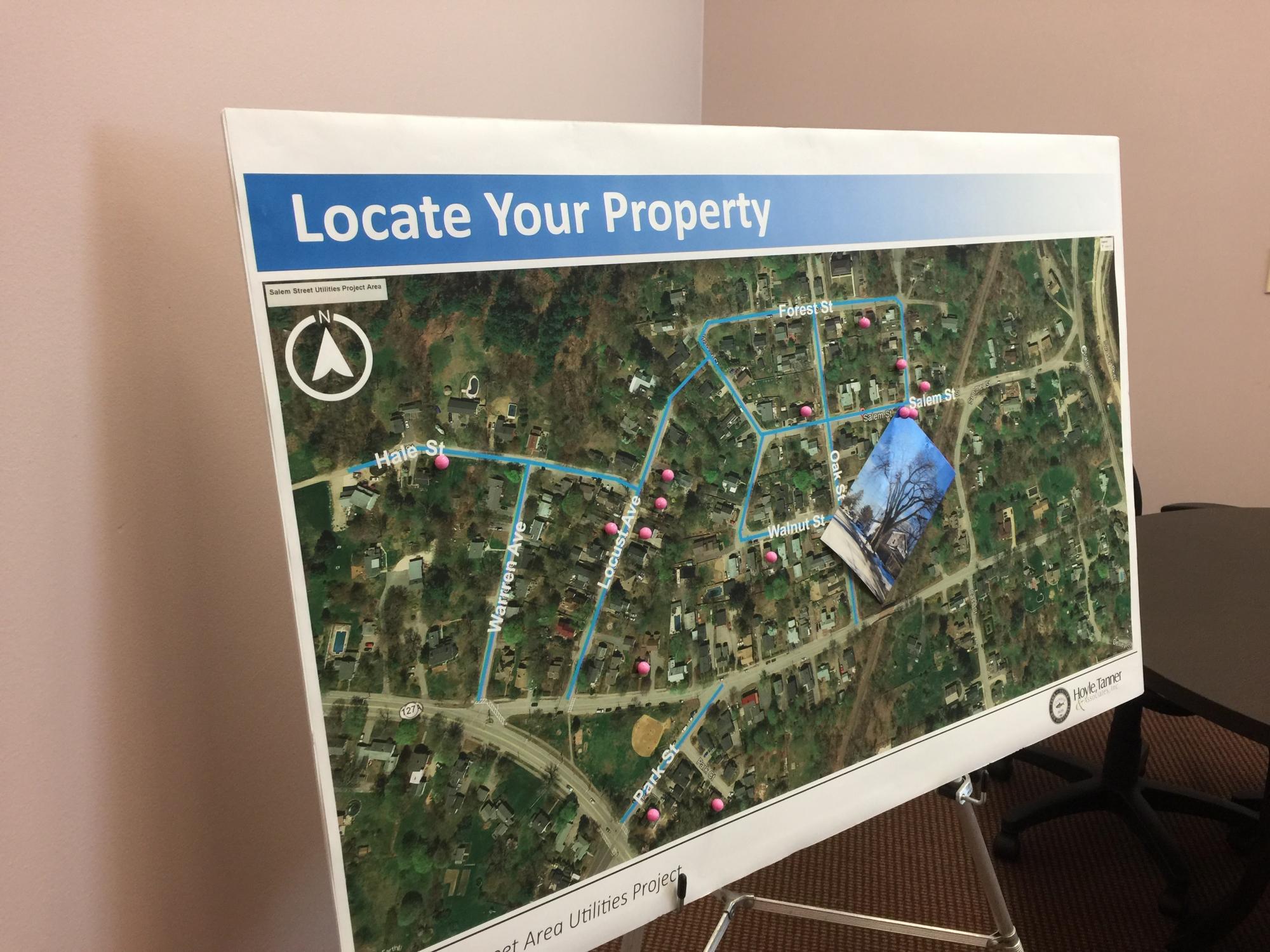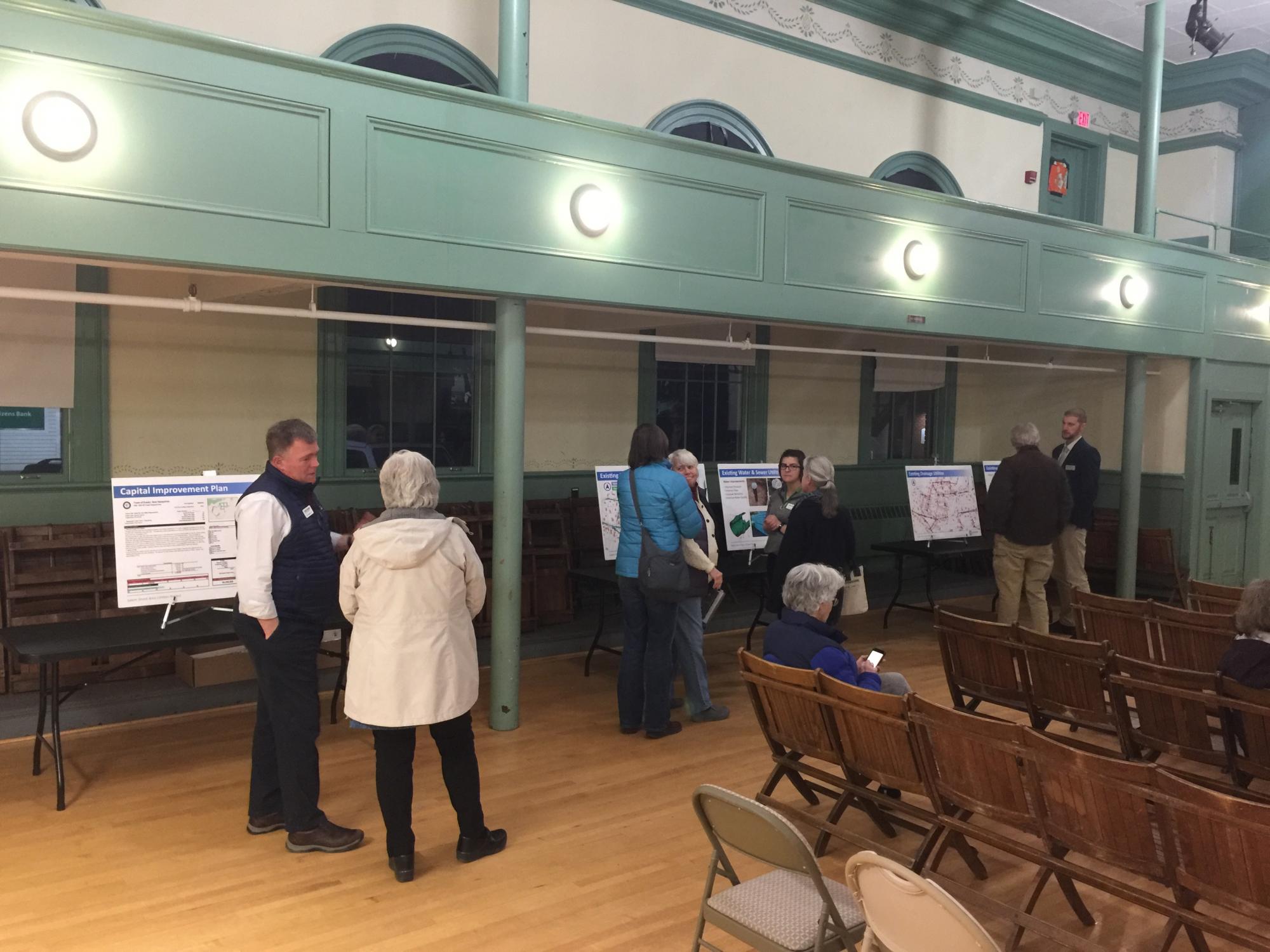The information contained in this article is not intended as legal advice and may no longer be accurate due to changes in the law. Consult NHMA's legal services or your municipal attorney.
Public engagement is a critical component to all infrastructure-related projects and is required by nearly all federal and state agencies as well as municipalities. The engagement process allows each participant to voice their opinion and have their viewpoint considered during the decision-making process, which ultimately shapes our communities’ futures. So, if it is required on nearly every project, why not take a proactive approach that makes participation easily accessible from anywhere as well as offering in-person events that encourage engagement?
One way to be proactive is to establish an engagement campaign and when doing so, there are three imperative things to incorporate:
Be Consistent with Engagement
By emphasizing the municipality’s desire for public engagement on all initiatives directed through the community, this will help grow the amount and value of the feedback the community receives. For communities that have multiple projects transpiring concurrently where they are asking for feedback on some but not others, stakeholders may view this as a lack of concern for public opinion. By placing an emphasis on public outreach during projects, there will be more value and more feedback from the community to work with. An example would be putting emphasis on issuing electronic surveys at the beginning of a project and encouraging community members through multiple pathways (website announcement, social media, newsletter blast) to participate in the survey. Not only does this underscore the fact that the project leaders want community feedback, but they are going above-and-beyond to make sure people have a chance to express themselves. By conducting public involvement activities regularly, such as town halls, community mapping, charrettes, crowdsourcing, and focus groups, it encourages local stakeholders to participate in the planning and design process, as well as help to identify community concerns and needs.
Clear Messaging
As much of a requirement as public involvement is in many governing agencies’ project processes, public involvement is an integral aspect in developing successful projects. Public acceptance of a project is largely contingent upon the community’s ability to actively listen to – and clearly communicate solutions to – the stakeholders’ concerns. By involving the public in the project advancement, through public meetings, the social media or design charrettes, it allows for a direct interaction between those developing project alternatives and those who will be directly impacted by that development.
Another critical part of clear messaging is ensuring the content is non-technical. Developing content for public outreach that is too technical or goes into project specifics too heavily will cause more questions than answers – or silence from the community.
One Source of Truth
Making sure that your message is written in such a way that individuals will be less likely to misinterpret your meaning is key; then utilizing either the community’s website or social media platforms to house all the materials presented for public consumption can ensure that interested parties can gather all of the same information and eliminate confusion.
Once your strategy is in place for your outreach, using a combination of virtual and in-person engagement methods communication methods will assist in engaging your stakeholders. Those are:
Virtual Engagement
With the global pandemic causing a drastic shift in business for nearly everyone, communities are altering their engagement efforts to gather from and share with their stakeholders more information. Utilizing technology to conduct public meetings, whether live or recorded, can assist public officials in gathering input into a project’s process. By using virtual public engagement tools, officials can increase their reach by making stakeholder participation convenient and available from anywhere. Some tools used in their outreach efforts include:
Telephone Town Halls are like conference calls that gather input from numerous participants but differ in that they are an outbound invitation to participants so that callers don’t have to remember to dial into the event. Once participants are on the Telephone Town Hall, they can fully engage by using their telephone’s keypad to respond to poll questions and virtually line up to ask live questions. At the end of the call, all data provided during the call and polling will be provided to the organizer. Some have produced guides on how to most effectively use this service from various providers.
Custom Surveys can be utilized throughout a project’s duration in a virtual engagement format. Creating custom surveys allows you to gather the most pertinent project information from your stakeholders. Using this as a virtual engagement tool also allows you to create multi-lingual surveys to encourage input from any stakeholders that predominantly speak a language other than English that you may be impacting.

Story Maps are a virtual tool that combine maps with text, images, and video content. Using tools like story maps will harness the power of maps to truly tell a compelling story by allowing users to click through various map areas to understand the project factors that will impact the project development. The information included in these story maps can also be referenced in the owner’s GIS systems for future capital planning and infrastructure improvement efforts.
Live Interactive Polling can provide you with real-time feedback from your stakeholders by asking questions that stimulate active thinking and discussion engagement. Some people think differently when they can question and respond throughout the presentation. This tool also provides an opportunity for individuals to provide anonymous feedback in the project development process. Using live interactive polling allows you to solicit feedback from stakeholders on their phones, tablets or laptops.
Project Specific Websites are a great information clearinghouse for project updates to all those interested. Although the development of the technical aspects of a project encounter little controversy, traffic control and construction duration sometimes draw significant attention. Providing the project intent, history of the area, project schedule and regular updates allows stakeholders to search and engage with the answers to questions or explore project progression.
While these tools provide different opportunities to connect with your stakeholders, not all of these virtual tools need to be used on every project.
In-Person Engagement
The second way to connect is by speaking directly with stakeholders face-to-face to ensure their voices are heard and ideas considered. Once they are heard, various engagement tools can be used to organize and deliver the received input. One of the challenges in using a virtual-only engagement approach is that participation may happen but project buy-in may not. For example, in areas where there is a large population some individuals may perceive their ideas and contributions to have minimal project impact because they are one of many. Various engagement techniques can be implemented based on the stakeholder demographics, including:
Town Hall or Traditional Public Meetings are useful when you are trying to get the initial project information out to a large population and in some cases are recorded and presented on a community’s local public television station. Town Hall style meetings are also helpful when the project falls within a mixed-use area of the community. In some instances, it is helpful to host back-to-back information meetings, one morning, one mid-day and one evening meeting, to reach all impacted stakeholders throughout the day.
Station Style Public Meetings are used in exchange with Town Hall Meetings. Instead of presenting the entire project to the public and soliciting feedback, community and project representatives break the project into various aspects (for example pedestrian amenities, project layout, surface treatments, lighting options). The meeting space would be set up with each of those topic areas separated and participants are able to review the presented posters or video content and interact to provide feedback. This type of meeting is usually completed in an open house style format where participants come and participate and leave when they have provided all of their input.
Collaboration with local businesses for “coffee hour” can be used where project representatives partner with local businesses who agree to host the discussion for a period to answer questions outside of the traditional public meetings to enhance reach to not only residents but also the traveling public using the corridor.
Information Stations at Community Events to introduce the project and community representatives that are soliciting input and feedback on the project. These Information Stations generally have a table with information, such as graphics, flyers, or posters that share details about the project with those passersby to review. Some of the events that could be productive to attend include Old Home Days, Pumpkin Festivals, Market Days, Picnics in the Park, Food Truck Events, etc. These events allow project representatives to have candid conversations about the impacts the projects have and garner lots of feedback.
Citizens Task Forces are extremely helpful when the project has a large stakeholder group and may impact numerous population demographics. This task force approach would identify the thought leaders in the community that have influence with others, including but not limited to business owners, church groups, neighborhood watch, refugee centers, PTA, etc., and who are extremely passionate about the project to continually gain community buy-in.
Adjusting your communication strategy to the size, complexity, and stakeholder impacts of your project will help public officials determine the best tools to use. By combining in-person and electronic communication into your engagement strategy, it allows communities to reach a larger subset of its population to ensure the plan and/or design meets their needs while aligning with the funding and schedule requirements. By disseminating information both in-person and electronically, project officials will understand who the thought leaders are in their communities. Knowing who you are engaging with can help state agency and municipal officials manage their communities accordingly.
Nichole Davis is the Creative & Development Director with Hoyle Tanner & Associates Inc., based in Manchester. Nichole can be reached by phone at 603.460.5157 or via email at ndavis@hoyletanner.com.

